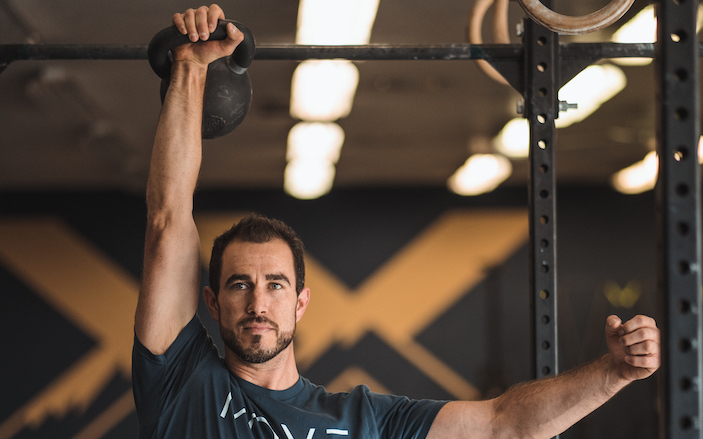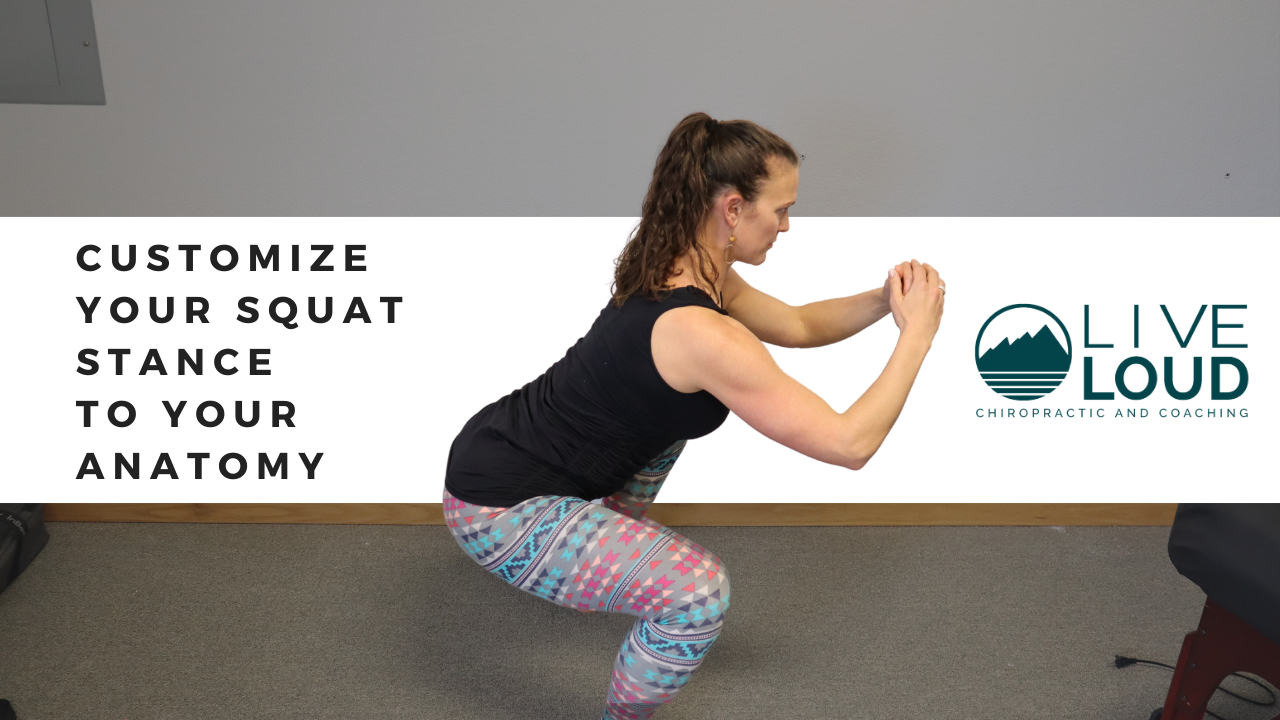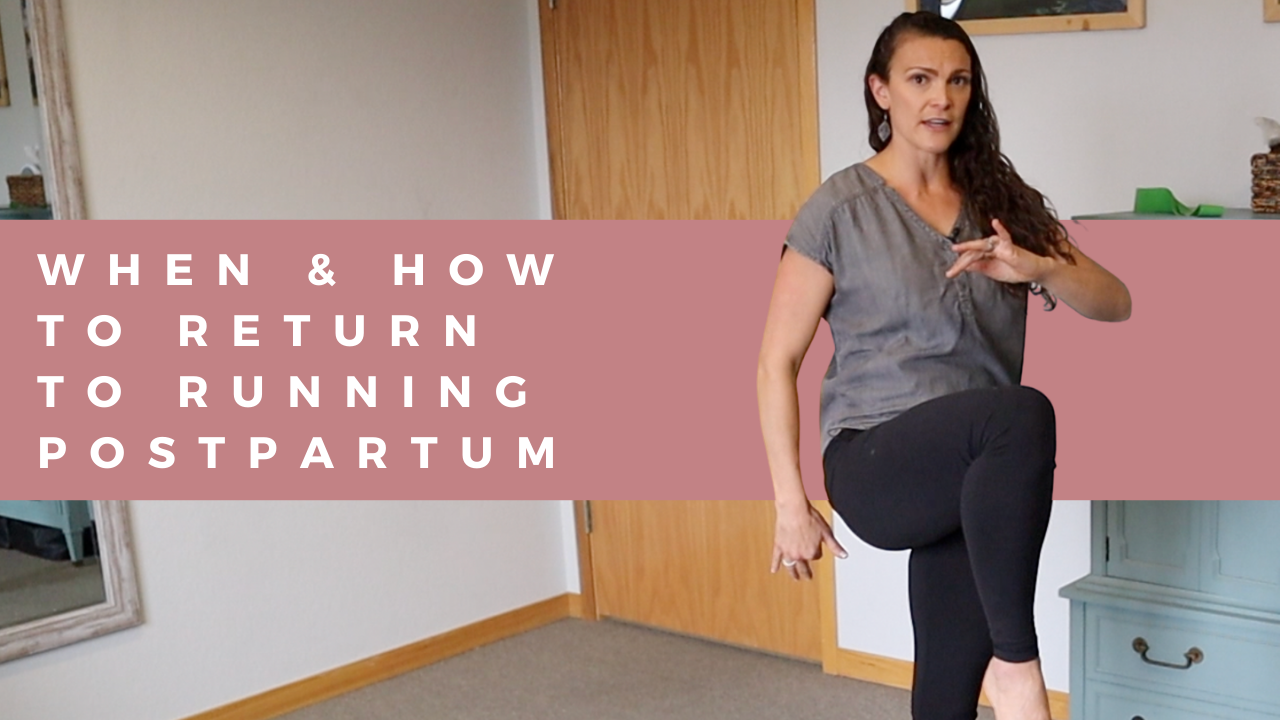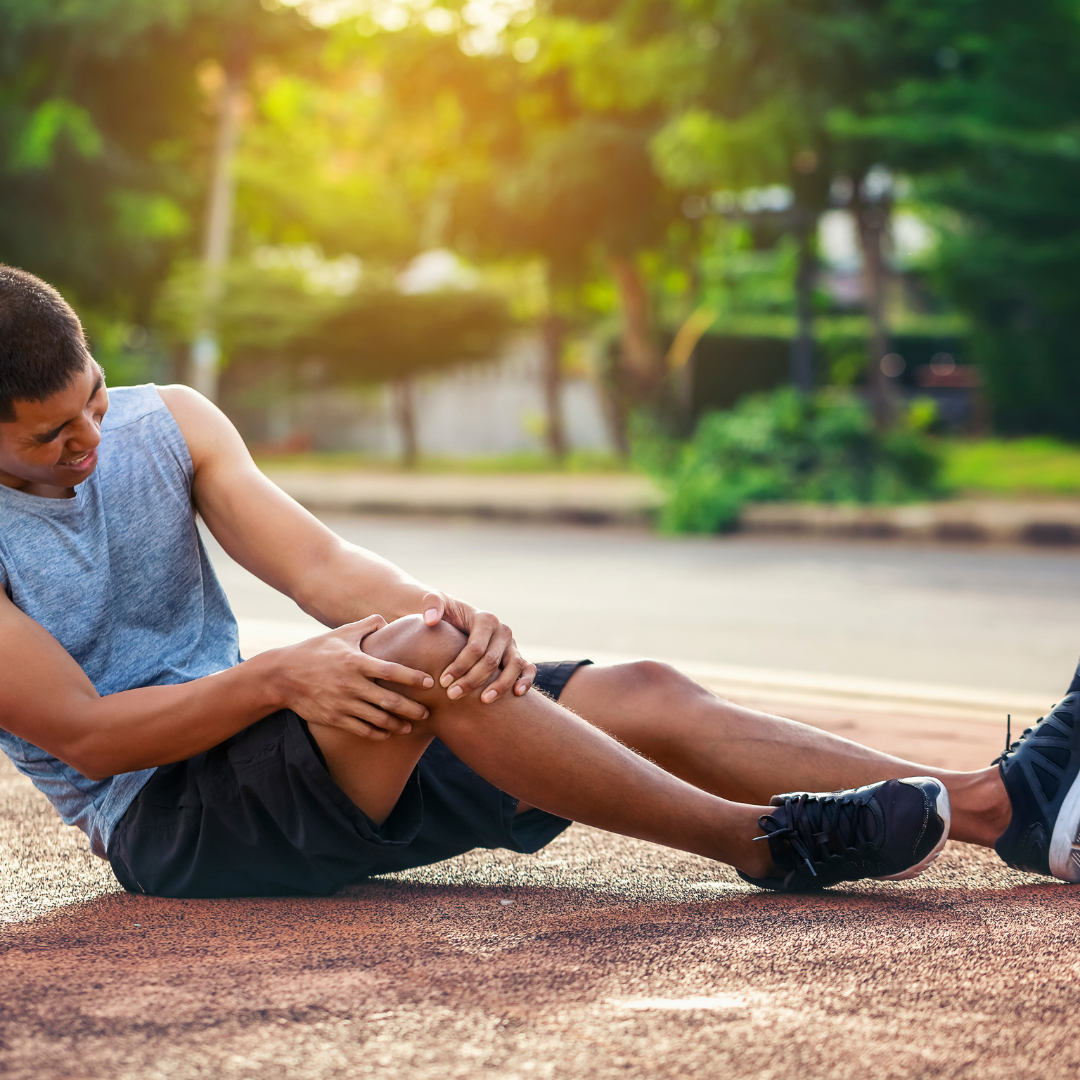Month: November 2021
Obstacle Course Racing & Aerobic Capacity Training EP|32
Live LOUD Life Podcast
Lafayette Colorado
Episode 32
EP|32 Obstacle Course Racing & Aerobic Capacity Training
With OCR Athlete, Volunteer FireFighter, and Strength Coach Dylan Miraglia
Let’s GO!
Live LOUD connected with OCR Athlete, Volunteer FireFighter, and Strength Coach Dylan Miraglia to bring you some high-value content on how to train for OCR racing and how to build a better capacity.
Connect With Us:
@live.loud.life
www.liveloudlife.com
**Be sure to Follow Dylan on Instagram and connect with him if you want to work with him**
Trains in and around Boulder as well as remote coaching if you need help with your aerobic capacity training, over functional strength, and OCR (Obstacle Course Racing) Training
- Passion for obstacle course racing started.
- Became an OCR athlete and pursued that sort of career.
- Personal Trainer for over 10 years and Currently Volunteer FireFighter
- 5 Under 5. Same Clock #500 Deadlift and Mile all under 5 min (Dylan will be attempting with the squat
- Focus on improving your speed as a runner
- Cannot beat the traditional big lifts like squatting and deadlift
- Plyometrics will help make you a faster runner
- Ex. of good Running Plyometrics bouncing, single-leg hops, hurdling over objects
- Balance training for control
- It is all about absorbing energy and redistributing it
- Progressive plyometrics using bands, 50% of your max weight FAST
- Example lunges off a platform with a band, so estimate at the bottom 50% but at the top up to 60-65%, fast down and the trying to jump up with power 5 reps on each leg
- Bands follow strength curve well, take off pressure where you need it and adds tension where you are weakest
- Build your aerobic base with long steady state
- Mix up with intervals where you can whether with other modalities from your long steady state method or interval with bursts
- Easy long steady-state, talk test, can you hold a conversation with someone
- Long Steady State Armor complex switching sides for 20 minutes 5 KB cleans, 3 squats, one press
- pair with explosive work with either swings or snatches for intervals
- Think control not how fast you can go
- Walking can be a hell of a warm up
- Reverse Hyper for traction and de-loading of the spine (please seek help in using this equipment)
About Dr. Antonio Gurule
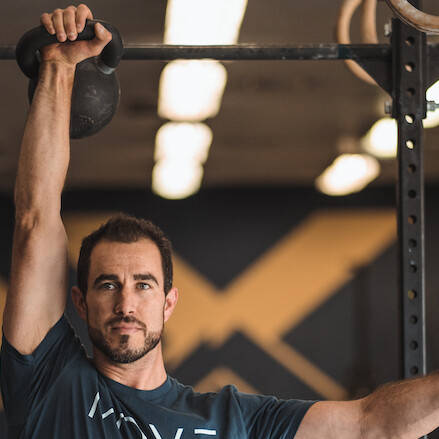
Background:
- Father
- Doctor of Chiropractic
- Owner of Live LOUD
- Personal Trainer & Health Coach
Check Out Some of Our Other Blog Posts and Podcast Episodes
Anthony Gurule 00:00
Hey what’s up guys, welcome back to another episode of the Live LOUD Life podcast. My name is Dr. Antonio, I’m your host of the Live LOUD Life podcast. My wife and I, we co-own Live LOUD Chiropractic and Coaching here in Lafayette, Colorado. We are just outside of Boulder, Colorado in Boulder County. And our mission is to help families. We want to help make families stronger, so that we can build a stronger community. We want to help guide you to the adventurous life that you and your family were meant for. And we do this through chiropractic and coaching. chiropractic, obviously being more of a hands on approach, more of a clinical conversation, clinical diagnostics, but the coaching aspect is really what we believe is, you know, the foundation of what our system methodology, whatever you want to call it is, because a lot of this comes around through just coaching suggestions and recommendations. also, you know, obviously within that comes into clinical prescriptions of certain things to eat or supplements, so on and so forth. But it’s coaching a lifestyle, it’s coaching, it’s coaching a philosophy and a foundation about how to live an active healthy life as an individual, and setting an example of a healthy active life for your family, for your immediate family, for your friends, and more importantly for your community. So stronger families to make a stronger community as a whole would be a win win, right? And that’s what we want to be able to do. we want to be able to help fill in the gaps in the holes that you’re maybe not getting from, from other roles and conditions.
Anthony Gurule 01:43
And today that’s in particular where we’re going to talk about. it’s going to be a little bit more of a shorter episode because this is more of a quote unquote, you know, just discussion around how to lay out a framework and a better understanding of how to work out or what exercises are safe or maybe not safe during pregnancy. This is a very, very common question that we get.
Anthony Gurule 02:12
My wife Nichelle has created a mini course that has some workout ideas, recommendations, and prescriptions than laid out into a workout. She guides and educates other clinicians on how to broach this topic as a chiropractor, how to better serve prenatal patients through chiropractic care, but also exercise recommendations and prescriptions, having recommendations with other personal trainers within the community whether that’s CrossFit whether that’s Orange Theory, chatting with coaches and owners and saying hey, if you have prenatal patients and they’re having these types of symptoms, or this has happened, here’s some better recommendations, not modifications. We call them lateralizations–you’re just you know, you’re doing something something different or something else we you know, we borrow that term from Charlie Weingroff, who’s a physical therapist and strength conditioning coach. But it also and also doulas, right, doulas and midwives and OBs who are directly involved with the prenatal process from nearly conception all the way through, having this conversation. we know that exercise is important during pregnancy,
Anthony Gurule 03:19
There are so many different studies that talk about the benefits of exercising during pregnancy, not only for the mom, but also for baby, which is quite interesting. They’re seeing increased cognitive-what’s the word I’m looking for? Excuse me, their cognitive output as a as an as a child through as they age is actually better from moms that actually worked out during pregnancy.
Anthony Gurule 03:50
Now this is tough, right? How do you define working out or exercise? it’s different for everybody. But we want to, and we encourage that, and yet we’re sympathetic to the different stages of life, aches and pains, so on and so forth, which obviously would limit what you can do from an exercise perspective. So you know, it’s a bit of a gray area on determining what is working out? what is exercise? What are the physical guidelines or recommendations for pregnancy? And without getting into the like, nitty gritty detail of every single thing. And obviously, every potential situation, if you had this versus this, what could happen? we’re not gonna be able to do that. What we just want to lay out is what is what are we trying to accomplish here, and we want to encourage you to stay as physically active as possible.
Anthony Gurule 04:41
And one of the things that constantly comes up is, well, should you add something in that you have not already been doing? Let’s say for instance, someone just through the stages of life with work and kids or whatever that is, they were not able to work out as much before they got pregnant, but now that they’re pregnant, whether they have more time or they understand the importance of exercises during pregnancy, well, would we say, “Well, you haven’t been exercising, so you shouldn’t do too much.” No, that doesn’t, that doesn’t really make sense. Now, we would encourage not to do too much, there’s obviously, you know, a too far swinging the pendulum of the other way. But we wouldn’t say “no, don’t exercise because you weren’t doing something before,” we just have to find those first few stepping stones to help them start to gain some momentum. and help hold their hand, if you will, So that their technique and they feel confident about lifting, or how far they’re walking or whatever that is. And that’s an important topic, because a lot of times people want to add things in, but they weren’t quite ready or weren’t doing them before. And they then assume that they’re not able to do them at all. So you do have to take that in consideration, there is a ton that you can do, and that you can still add, even though you weren’t doing them prior to pregnancy.
Anthony Gurule 05:54
Now on the big questions is, is it safe? you know, outside to contact sports, or different things like that the majority of what you’re going to do is safe for pregnancy, right? Rock climbing, we have pregnant patients that have been rock climbing before, obviously, there’s a certain inherent risk with certain sports or activities. You know, you could fall off riding your bike, you could fall over running, right, so we’re not encouraging any of these by any means. We’re just kind of, you know, setting some suggestions, if you will. And you have to take into consideration.
Anthony Gurule 06:31
Now, there are certain things to consider when you’re talking about like weightlifting, and how heavy and the intensity that you’re doing. And if you’re doing Valsalva movements, which is essentially holding your breath to maintain a more rigid or stiff torso, as you’re seeing changes in blood volume and blood pressure, you know, you do have to take that in consideration. And that is again, of course a conversation with your provider that is managing your, your pregnancy, but we recommend Mama’s weight lift, or do resistance training. During pregnancy, again, we talked about about load management and the intensity and things like that, but you can still lift and do fairly intense things. And it’s a fairly as a you know, as a scale and a wide range during pregnancy and see a ton of benefit from that. Now, are we trying to hit one rep maxes and PRs during pregnancy, I mean, some would argue yes, but I would argue, why, that’s not really an accurate representation of what your strength is anyways. So you know, you do have to to kind of keep manipulating the numbers and the weights and the intensity and the sets and reps in order to do it. But weightlifting and resistance training is safe, and it is effective. Now, outside of that, there’s not a lot of unsafe things to do, again, outside of contact sports, or things that would elicit, you know, potential trauma to you or baby based on impact we’ve had, again, not our recommendations, but some have tried very just easy scheme, because they’re in the winter months, and they wanted to and they felt very confident about not falling. So you know, you have those types of things.
Anthony Gurule 08:16
Overall, again, we’re talking about movement. You need to move, and it’s good to get your heart rate up. And it’s good to breathe hard. So that doesn’t mean just because you’re pregnant, you can’t do HIIT training or circuit training or CrossFit or Orange Theory. But you do have to listen to your body and understand certain signs that would indicate that things might be too much, right? Now those are going to be different for everyone, but a lot of this comes down to you know, lightheadedness, you know, breathing too hard. Certain aches and pains within lower extremity, chest, abdomen, so on and so forth would be obviously like your more extreme ones. If you’re becoming pale or anything like that, I mean, again, these are the same criteria, though, that would be if someone else was working out or training too hard. So it’s realistically the same thing. It’s just that your threshold level for all those most likely have gone down. And depending on what type of an athlete you were before, you’re going to be maybe a little frustrated that you’re not able to do the things you were able to do previously, which makes sense. But if you’re someone who wasn’t exercising before, you’re probably going to be a little bit more hyper aware of that, of just feeling that shortness of breath or that uneasiness. So again, we’re not saying you have to push through that because we’re not trying to set yourself up for a strength and conditioning program to increase your metabolic capacity to increase your strength and conditioning during pregnancy. We’re trying to help you maintain a healthy active pregnancy.
Anthony Gurule 09:54
Now, walking. walking is great. but in general, we encourage you to do something above and beyond walking. Obviously, again, certain things would dictate that you would not be able to do so. And this is again, any exercise. Any exercise that you do during pregnancy needs to be consulted with and work through and have a conversation with the primary physician who is managing your pregnancy, whether that’s your nurse practitioner, your midwife or your OB or obstetrician, right. But we would encourage more than just walking. walking is fantastic, but that’s kind of like your baseline minimum, right? Just like our activities, or recommendation activity guidelines. We want a few days a week of where we’re kind of just doing this steady state getting our steps in, you know, kind of pushing ourselves, we’re huffing and puffing, but still just kind of at that conversational level, but you’re not really getting a lot of benefits outside of that.
Anthony Gurule 10:55
So if you’re just walking, high five. kudos. can you do something more? Can you do some bodyweight squats? Can you do some bodyweight, you know, good mornings? can you do some walking lunges? do you have a suspension training, we’re able to do some bodyweight rows? Do you have some bands that you can do some rows with? You know, there’s a lot that you can do that allows you to get a little bit more out of that. Now, again, this all comes back down to preferences of exercises that you like to do, because that’s gonna allow you to maintain the most consistency, but then also the intensity that you like to do. And we do encourage having an open mind and at least being willing to try some high intensity things that allow you to still get your heart rate up a little bit. And it’s okay to lift more than five or 10 pounds. And not saying that that is a bad thing. There’s programs out there where it’s all directed around that where it’s lighter weight, high rep, but I just don’t want individuals and mamas to feel like they’re not able to do more and or being ashamed because other people are just saying they should back off because they’re pregnant. “why would you need a lift that much?” It fits within your strength, and your comfort, and your wheelhouse, that is totally fine.
Anthony Gurule 12:05
Again, you if you’ve been doing that enough, you understand the risk reward ratio and having a conversation with your practitioner has driven us to kind of help navigate and guide as you start to get further through pregnancies, what things maybe we need to change or manipulate. But that’s totally fine. Now outside of that, the question around safe also comes up around core exercises. diastasis recti, pelvic floor strength, so on and so forth, we want to enhance the capability of understanding how to control tension within your abdominal wall and your pelvic floor through pregnancy, because the pressure is increasing due to baby taking up more space. But we’re not we’re not necessarily we’re not gaining more strength, right.
Anthony Gurule 12:45
And so what a lot of people assume it’s when we’ve seen this, is “I don’t want diastasis. So I’m doing more core work to prevent diastasis from happening.” diastasis recti will happen in 100% of moms, it’s estimated at the week 35 Everyone will have some form of it. Now it is technically not a quote unquote diagnosis, though, until 12 weeks postpartum, because it is a normal thing that everyone will get. So you can’t diagnose someone with something that everyone will get–doesn’t make sense, right? So after that, though, if you still have weakness or spacing issues, then we can have a you know, a stronger conversation about putting a diagnosis on that.
Anthony Gurule 13:26
But what we’re trying to enhance and help is what exercises are quote unquote, not safe versus unsafe, but adding too much pressure or tension into the abdominal wall or the pelvic floor and creating more laxity. again, as that pressure for as baby’s growing starts to put more pressure on the pelvic floor and the abdominal wall. If you’re doing more things that increases the pressure within the within the abdominal cavity that’s going to push on that separation even more and/or push on that pelvic floor even more, creating potential incontinence or prolapse issues and/or more bulging and doming within the abdominal wall stretching out that separation or that gap even further, potentially making the recovery process more challenging or slightly longer. I’m not saying that it will but potentially, so we do have to take that in consideration. So we go through activation exercise of the pelvic floor, of the abdominal wall so that you better understand how to control those pressure increases while you’re lifting or exercising so that you simply can stay at a management level.
Anthony Gurule 14:28
And that in turn, helps you get through pregnancy of understanding how to lift up your older kiddo, having to lift up dog food or anything like that. It’s just managing and controlling pressure. So there’s really not anything that I would say that safe or unsafe. Now, things that we would advise against for core exercises is sit ups or crunches. You know a lot of those things that create like hanging knee raises and different things like that during pregnancy. A lot of those things that create a lot of intra abdominal pressure and tension. and especially during a flex position, that tends to put a lot more pressure on the abdominal wall, the separation where diastasis will occur as well as the pelvic floor.
Anthony Gurule 15:09
So, you know, while we never say never, there’s definitely a category of things that we definitely urge against because the risk/reward benefit and again, risk not being “injured,” But risk of potentially putting more pressure and making the recovery process on the other side harder, is not is not something that we find to be as advantageous. But you can still get the benefits of quote unquote, core exercises through full body movements such as goblet squats, such as deadlifts, you know, depending on the phase that you’re in, push ups, which are, you know, a dynamic plank. or being able to do a TRX row, which is a reverse plank as you’re just lifting yourself up. three point rows where you’re on, you know, two hands or doing like a row on a bench, where you’re in a tabletop position that’s adding anti rotation exercises. So there’s a ton that you can do that still highlights and isolates, the core isolates, sorry. that highlights and will emphasize core activation, but through a full body compound movement. And what’s great about that is during pregnancy, depending on your energy levels, it’s hard to do all the little isolated accessory and all these separate exercises as it is. So it’s kind of nice being able to combine everything, so you get more bang for your buck, especially if you’re a parent and you’re on and you’re on baby number two or three, right?
Anthony Gurule 16:31
So what exercises are safe for pregnant women to do? All are. reduce or eliminate for sure contact activities, different things like that. the increased risk activities of you know, trauma and things like that. Outside of that you’re managing pressure, I would definitely encourage reducing anything that’s heavy lifting, that’s, that’s requiring you to do Valsalva moves, you’re having to hold your breath for an extended period of time. that changes blood pressure, so on and so forth. But outside of that, Pregnancy is a completely safe time to do all exercises. we definitely as we highlighted, urge and encourage, you know, certain things over other ones just for you know, added bang for your buck or full body movements, so on and so forth. And that, but outside of that you are free to do what you want.
Anthony Gurule 17:19
If you want guidance, though, you know, there are there are trainers out there that work specifically with prenatal patients. we would love to be able to have that conversation with you if that’s something you want to bounce back or navigate. Because we do want to encourage as much as we can. A very, very active pregnancy through exercise working out or however you want to describe that. So if you found this beneficial, please like share, subscribe. if you’re pregnant, I hope you can utilize this and take some of the information for you and yourself. If you have anyone else you know… a relative a family member, a friend who is pregnant and they’re unsure they’ve been you know asking this question what things I don’t know what things I can do. I don’t know if it’s safe for baby share this video with them. We’d love to be able to provide a better frame of reference and or context to be able to ask better questions so that they can find the workout program or the movements that work best for them during their pregnancy. Until next time guys live loud .if you’re currently pregnant, Congratulations, and we look forward to helping and serving in the future.
–
Running Your Pace EP|31
Live LOUD Life Podcast Lafayette Colorado
Episode 31
Running Your Pace
With Dr. Antonio
Hello!
Be sure to subscribe to the show, share it with your friends, and please give us a review and comment!
If you have not connected with us yet outside of the show you can find us at www.liveloudlife.com. You can follow us on Instagram @live.loud.life. Connect with us directly on Facebook and LinkedIn Antonio Gurule.
Be sure to find more useful content, videos, and demonstration on YouTube, Live Loud!
Enjoy the show!
- Running Your Own Pace
- It is good to be observant and excited about the future
- Do not compare your Chap 2 to someone else Chap 20
- A little jealously and ego is ok
- It needs to be motivating and stimulating
- You need to make it happen, take charge of your life
- Trying to do everything spreads you too thin, you can’t do all of the things all the time
- Seasons of Life, the season of life might not be conducive to the goals and aspirations you might have
- Give and Take, if you want something, something else will be put by the side
- Your pace might be completely different for you based on your past and maybe injuries
- Maybe you need a coach to keep you on track and on pace
- We would love to help you keep on your pace and on track with your goals
How to Customize Your Squat Stance to Your Anatomy
How to Customize Your Squat Stance to Your Anatomy
If you feel like you’re limited by your squat, feeling like you can’t go down low enough, not getting enough strength, or having pain in your knees, low back, ankles, or hips, this blog post is for you.
My name is Dr. Antonio with Live Loud Chiropractic and Coaching in Lafayette, Colorado. Today, we’re going to be talking about why everyone should have a different squat stance. Not everyone has the same body type, so not everyone should be squatting the same way. But yet in our fitness classes, we’re all taught to squat hip-width apart, with our toes facing straight. But that doesn’t help if your anatomy doesn’t line up with that stance.
PLAY VIDEO ⬇︎
Understanding the Anatomy of the Hips
To start, here’s a brief anatomy lesson that will help you understand why you should be considering the different squat stance, and a couple of different things that you that you can do to determine what your perfect perfect squat stance is. Picture your spine. Underneath the spine, we have our pelvis. The pelvis and the spine attach in back at the sacrum. Now the important part to notice is that this is a unit—the pelvis moves as a unit. The place where we see more movement is in the ball and socket joint itself. The ball and socket joint is a nice, big, greasy joint, that should move a lot. It can pivot, twist, and go through all sorts of ranges of motion. We also have to consider what is attatched to this joint. The femur attaches to the tibia through the knee joint, and then down into the foot. Because of that, the position of the foot will change the articulation of the hip joint. And the space that the feet are apart from each other, depending on the activity or the movement, will also determine how much the joint is moving.
But let’s zoom in even further. We have two sides of the joint: the ball, and the socket. The socket is shaped differently for different people. For some individuals, it is kind of down and to the side. For other individuals, it might be down and slightly forward. Or, it might be slightly angled higher, and out and up. The shape of the joint determines how the head of the femur actually fits in there. The femur can also have retro or introversion, meaning the the positioning of the actual head could be slightly forward or slightly back. That then will also determine how the rest of the leg is oriented in relationship to the pelvis, based on what that orientation is. So right off the bat, we’re talking about two basic variations that will determine a much different stance and position among different individuals.
The actual depth of the socket might also be different. Meaning, how deep is the acetabular rim in comparison to others? For some people, they have a very shallow rim, which means the range of motion they can express is a lot higher. For other people, they might have a deep rim, which means they’re not going to be able to express as much hip range of motion, because that will start running into bone on bone.
How Do the Ball and Socket Hip Joints Move Together?
First, hip flexion. If you’re just standing, the hip flexes up when you walk, it swings back behind you, it can also internally/externally rotate a little bit. And then there’s any combination of that abduction, like bringing your leg out to the side. Now when we go into a squat, that expresses a really deep amount of hip flexion. As you go through various ranges of motion based on how the socket is shaped, it’s going to change the position of the femur. So if any kind of coach gives everyone the same coaching on squat form, you’re probably going to be running into some issues.
What kind of issues?
- Bone rubbing up against bone. If you’re not in the proper orientation, you’re going to start rubbing that joint in a way the joint was not set up for. Oftentimes, I get individuals complaining of a pinch, deep in their hip, with that deep flexion of the deep part of the squat. That’s because that bone is rubbing up on either the acetabulum or the labrum.
- Your body is going to run out of space. You’re going to tilt your pelvis upward, which is that classic butt wink or dumping of the low back. When you do that, the pelvis rotates upward. You’ve now changed the position of the acetabulum to scoop out to give you more hip range of motion. By doing the butt wink, I tilt the pelvis underneath, and then can actually get a lot more hip flexion. So is the butt wink bad? That it depends on the context. If you’re under a lot of load, we don’t want to be dumping that lower back or tucking the pelvis very much. But if you go to the bathroom in the woods, or if you’re sitting on the floor playing with your kids, or eating a meal, it is completely fine to be in that position. But under load, when trying to maintain this neutral lumbar spine, I start tucking the pelvis, the lower back starts to flex, and I will be under compression because I have weight on me, and I’m moving the spine.
Those are the two scenarios that we do not want, that tends to lead to to a potential injury. Now, many will argue that is not true, or we don’t know that to be 100% true. But the fact is, no one wants to flex their back when lifting. And it doesn’t take a lot to get injured. If I’m under load, and I’m buckling just a little bit, I’m going to see, since the pelvis moves as a unit, that motion coming from lower back. It’s not going to be the pelvis. So when people usually complain about lower back pain after squatting, many people say it’s an SI joint because they’re pointing close to the SI. But the L-4 and L-5 are right there as well. And again, since the pelvis is moving as a unit, you’re not going to typically see just SI joint disfunction, it’s typically going to be a lumbar derangement, or some sort of lumbar issue.
Doing a Hip Scour to Improve Your Squat Form and Flexibility
Here’s how to assess your anatomical makeup to figure out where you should be squatting. This is something you can do on your own, laying on your back by simply scouring your hip. We want to figure out where the hip socket is the deepest. So when you bring the knee up in this the narrow midline area, you’re going to run into that bone on bone position that we talked about. If you keep that hip in that front, in that sagittal plane, you might run out of space. But if you allow the knee to dive out, follow where the hip wants to go, you’re going to see a much wider opening. That’s what’s going to get into a deeper squat position. If you’re being coached to go deeper and your stance is narrow, it’s probably not going to happen and you’re going to run into a lot of issues.
How to Squat With Proper Form
When you’re squatting, there are two main rules: don’t let your feet move, and try to maintain a long, neutral spine throughout the movement. By expressing more hip range of motion, you’re going to reduce the amount of lumbar or low back movement. You’ll want to try two different squat positions to determine the most ideal position for you.
Play with the position of your feet and the angle of your toes. If you’re in a narrow stance, hip width and toes straight, as you lower you might feel a block. Even if your force yourself to go lower, your hips might block you from doing so. It might force you to dump into your lower back which is not what we want.
Now try a wider stance. If you struggled with the narrow stance, hopefully you’ll see now that you can easily go lower without compromising the low back, and by expressing more hip range of motion. When you find the right position, your your body in your mind should go, “Oh, that was easy.” You shouldn’t need to force yourself into the depth, you should be able to just line up everything so that you can drop in and use each range of motion from each joint as needed.
Simply changing your setup makes a world of difference, especially for those who are dealing with the pain and tension in front of their hips.
Conclusion
Be sure to refer back to the hip scour as something you can do on your own. If you’re unsure how to do it, we can do it in a simple video assessment. Just from watching you do a couple repetitions, I’ll be able to guide you in the right direction. So if you’re interested in that, please reach out to us. If you know someone who’s struggling with the squat send them this video. If it’s a coach, this might be a little bit tougher, but please share this with them because it makes such a world of difference. It improves not only the strength that you express, but also the potential to reduce injuries and deal with pain.
Thanks for reading! I hope this blog brought you extreme amounts of value for your health and fitness. Be sure to subscribe to the YouTube channel so that you can keep up with all the videos that are coming through. Be sure to check out the rest of our website, podcast episodes and other forms of content that I know will be super valuable for you.
Until next time, guys, Live LOUD!




